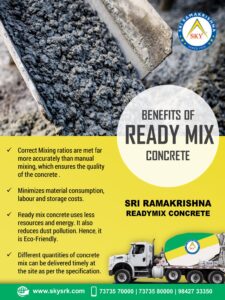Cement grout is a mixture of water, cement, and sand. It fills gaps, seals joints, and provides structural stability.
Cement grout is essential in construction and renovation projects. It serves multiple purposes, from filling gaps between tiles to reinforcing structures. The mixture of water, cement, and sand creates a durable and strong seal. This ensures the longevity of installations and prevents water penetration.
Cement grout is easy to apply and offers excellent bonding properties. Contractors and DIY enthusiasts often choose it for its reliability. It also comes in various colors to match different design needs. Proper application ensures that structures remain solid and aesthetically pleasing. Cement grout is a versatile and indispensable material in the building industry.
Introduction To Cement Grout
Cement grout is a crucial material in construction. It is a mixture of cement, water, and sometimes sand. This blend fills gaps and seals joints, providing strength and stability.
Essence Of Cement Grout In Construction
Cement grout plays a vital role in the construction industry. It is used for filling voids and cracks in masonry structures. This helps in enhancing the structural integrity of buildings.
Waterproofing is another important function of cement grout. It prevents water from seeping into structures, protecting them from damage. It is commonly used in bathrooms, kitchens, and other wet areas.
Cement grout also stabilizes foundations. By filling gaps and cracks, it reinforces the base of structures. This ensures that buildings remain stable and safe.
Brief History Of Grouting
The history of grouting dates back to ancient times. The Romans were among the first to use grout in their construction projects. They used a mixture of lime and volcanic ash to fill gaps in their structures.
In the 19th century, the use of cement grout became more widespread. The invention of Portland cement revolutionized the construction industry. This new type of cement provided stronger and more durable grouting solutions.
Today, cement grout is an essential material in modern construction. Advances in technology have improved its composition and application methods. This ensures that structures are stronger and more durable than ever before.
Key Ingredients Of Cement Grout
Cement grout is a crucial material in construction. It fills gaps and strengthens structures. Understanding its key ingredients helps ensure the best results. Below, we explore the main components of cement grout.
Cement Types And Selection
The type of cement used in grout affects its performance. Portland cement is the most common choice. It provides strong binding properties. There are different grades of Portland cement:
- Type I: General-purpose cement.
- Type II: Moderate sulfate resistance.
- Type III: High early strength.
- Type IV: Low heat of hydration.
- Type V: High sulfate resistance.
Choosing the right type depends on the project requirements. White cement is another option for decorative purposes. It offers a clean, bright finish.
Additives And Their Functions
Additives enhance the properties of cement grout. They improve performance in various conditions. Common additives include:
| Type of Additive | Function |
|---|---|
| Plasticizers | Increase flow without adding water. |
| Accelerators | Speed up the setting time. |
| Retarders | Slow down the setting time. |
| Air-entraining agents | Introduce tiny air bubbles to improve freeze-thaw resistance. |
Each additive serves a specific purpose. Adding the right ones ensures the grout meets the project’s needs. For example, plasticizers make it easier to work with the grout. Accelerators are useful in cold weather. Retarders are helpful in hot climates. Air-entraining agents are essential in areas prone to freezing.
Understanding these ingredients and their roles is vital. It helps in creating durable and effective cement grout.
Properties Of Cement Grout
Cement grout is a crucial material in construction. Its properties impact its performance and usability. Let’s explore its key properties.
Viscosity And Flowability
The viscosity and flowability of cement grout are vital. These properties determine how easily it can be applied. High flowability means it can fill gaps and voids without much effort. This is especially useful in tight spaces.
A balance between viscosity and flowability is essential. Too viscous grout is hard to work with. Too flowable grout may not stay in place. Adjustments in the mixture can help achieve the right balance.
Setting Time And Strength Development
Setting time refers to how long it takes for the grout to harden. This property is crucial for project scheduling. Faster setting times can speed up construction. But, it needs to be managed carefully.
Strength development is another key property. It indicates how strong the grout will be over time. Initial strength is important for early load-bearing. Long-term strength ensures durability.
The table below summarizes the typical properties of cement grout:
| Property | Description |
|---|---|
| Viscosity | Resistance to flow |
| Flowability | Ease of application |
| Setting Time | Time to harden |
| Strength Development | Progression of strength over time |

Credit: theconstructor.org
Mixing The Perfect Cement Grout
Creating the perfect cement grout requires attention to detail. Getting the mix right ensures durability and strength. Let’s explore the key steps in mixing cement grout.
Proportions And Measurements
Accurate proportions and measurements are crucial for the perfect cement grout mix. Use the following table for guidance:
| Ingredient | Proportion |
|---|---|
| Cement | 1 part |
| Sand | 2 parts |
| Water | 0.5 parts |
Always measure ingredients carefully. Use a clean container for accurate results. Mixing proportions affect the grout’s strength and durability.
Mixing Techniques For Consistency
Mixing techniques are essential for consistent and smooth grout. Follow these steps:
- Start by adding sand to the mixing container.
- Add cement to the sand and mix them thoroughly.
- Slowly add water while mixing continuously.
- Check the consistency: It should be smooth and lump-free.
Use a mechanical mixer for large batches. For small batches, a sturdy trowel works well. Mixing time is also important. Mix for at least 5 minutes to ensure even distribution.
A well-mixed grout will have a smooth texture. It should not be too runny or too dry. Check the mixture regularly to achieve the desired consistency.
Application Techniques
Applying cement grout correctly is crucial for the durability of structures. This section explains the best practices for surface preparation and grout injection and placement methods.
Surface Preparation
Proper surface preparation ensures strong adhesion. Follow these steps for optimal results:
- Clean the surface: Remove dust, dirt, and loose particles.
- Moisten the area: Wet the surface but avoid standing water.
- Check for cracks: Seal any cracks before grouting.
It’s essential to prepare the surface well. This step prevents future issues like cracks and gaps.
Grout Injection And Placement Methods
Different methods suit various applications. Here are common techniques:
| Method | Description |
|---|---|
| Hand Placement | Simple and effective for small areas. Use trowels or spades to place the grout manually. |
| Grout Pumping | Ideal for large areas. Use a pump to inject grout under pressure. |
| Pre-packed Grout | Comes ready to use. Mix with water and apply directly. |
Each method has its benefits and best-use scenarios. Choose the right one for your specific project.
Follow these application techniques carefully. This ensures the longevity and reliability of your structure.
Common Uses Of Cement Grout In Construction
Cement grout is a versatile material used extensively in construction. It serves numerous purposes, enhancing the durability and stability of structures. Here are the common uses of cement grout in construction:
Foundation Enhancement
Cement grout is essential for strengthening foundations. It fills voids and gaps in the soil, providing a stable base for buildings. This process, known as grouting, helps in avoiding settlement issues.
The grout also reinforces the area around foundation piles, ensuring the structure remains upright. This is especially crucial in areas with weak or loose soil. By using cement grout, builders can ensure a solid and long-lasting foundation.
Another common use is in underpinning existing foundations. When older buildings show signs of weakness, cement grout can be injected to provide additional support. This helps in maintaining the integrity of the structure.
Infrastructure Repairs And Maintenance
Cement grout is widely used in repairing and maintaining infrastructure. Bridges, tunnels, and dams often require grout to fill cracks and voids. This helps in restoring their structural integrity and extending their lifespan.
In bridges, grout is used to fill joints and gaps, ensuring a smooth and stable surface. It also helps in anchoring bolts and reinforcing the overall structure. This is crucial for the safety and longevity of the bridge.
For tunnels, grout is injected to fill cavities and prevent water seepage. This ensures the tunnel remains dry and safe for use. The grout also reinforces the tunnel walls, preventing collapse and other structural issues.
Dams benefit from cement grout by having their cracks and leaks sealed. This prevents water from seeping through and weakening the structure. The grout also reinforces the dam, making it more resilient to pressure and environmental factors.
In all these applications, cement grout plays a critical role in maintaining and enhancing infrastructure. It ensures the safety and durability of various structures.
| Application | Purpose |
|---|---|
| Foundation Enhancement | Strengthening and stabilizing building foundations |
| Infrastructure Repairs | Restoring structural integrity of bridges, tunnels, and dams |
| Waterproofing | Preventing water seepage and leaks |
Troubleshooting Common Grout Issues
Cement grout can sometimes present issues after installation. Knowing how to troubleshoot these problems ensures durability and a clean finish. Here, we will discuss common grout problems and how to fix them.
Cracking And Shrinkage
Cracking and shrinkage are common issues in cement grout. Cracks often occur due to improper mixing or environmental factors.
- Improper Mixing: Using too much water can weaken the grout.
- Environmental Factors: High temperatures or low humidity can cause cracks.
To prevent cracks, ensure the grout mix is consistent. Avoid adding too much water. Maintain a stable environment during installation. Keep the area moist while the grout cures.
Shrinkage happens when the grout mix is too wet. It can also occur if the grout is not compacted well.
- Water Content: Use the correct amount of water for mixing.
- Compaction: Ensure the grout is compacted properly during application.
To fix shrinkage, remove the affected grout. Mix a new batch with the right water ratio. Reapply and compact properly.
Avoiding And Rectifying Imperfections
Imperfections in grout can include discoloration, uneven surfaces, and gaps.
Discoloration can occur due to inconsistent mixing or using dirty water. Always use clean water and mix thoroughly.
Uneven Surfaces are often a result of poor application techniques.
- Use a grout float at a 45-degree angle.
- Ensure even pressure when applying grout.
Gaps in grout lines can appear if grout is not applied evenly. Fill gaps immediately to avoid further issues.
| Issue | Cause | Solution |
|---|---|---|
| Cracking | Improper Mixing | Mix with correct water ratio |
| Shrinkage | Too much water | Use less water |
| Discoloration | Dirty water | Use clean water |
By understanding these common issues, you can ensure your grout remains strong and looks great. Proper mixing, application, and curing are key to avoiding problems.

Credit: tiledoctor.com
Advancements In Grouting Technology
Cement grout has been a staple in construction for many years. Recent advancements in grouting technology have revolutionized its application and effectiveness. These innovations have made grout stronger, easier to apply, and more durable.
Innovative Additives
New additives are changing the game in grouting. They enhance the properties of cement grout, making it more versatile.
- Polymer Additives: These increase flexibility and reduce cracking.
- Antifreeze Additives: These allow grout to set in cold temperatures.
- Waterproofing Additives: These make grout resistant to water penetration.
These additives make grout suitable for various environments and conditions. They extend the life of the grout and improve its performance.
Automated Mixing And Injection Systems
Automated systems are making the mixing and application of grout more efficient. These systems ensure a consistent mix and reduce human error.
| Feature | Benefit |
|---|---|
| Consistent Mixing | Ensures uniform quality of the grout. |
| Reduced Labor | Less manual work and faster application. |
| Precision Injection | Accurate placement and reduced waste. |
These systems improve the efficiency of grouting projects. They make the process faster and more reliable.
Environmental Considerations And Sustainability
Understanding the environmental impact of cement grout is crucial for sustainable construction. Focusing on eco-friendly options and their effects can guide better choices.
Eco-friendly Grouting Options
Opting for eco-friendly grout options can significantly reduce environmental harm. Some sustainable choices include:
- Recycled Materials: Using grout with recycled content cuts down on waste.
- Low VOC Emissions: Select grouts with low volatile organic compounds to improve air quality.
- Natural Ingredients: Grouts made from natural materials like clay have a smaller carbon footprint.
These options ensure the use of less harmful substances, promoting a healthier environment. They also support sustainable practices in construction.
Impact On The Environment
Cement grout production and use have several environmental impacts. Key areas of concern include:
| Aspect | Impact |
|---|---|
| Carbon Emissions | High energy use in production leads to carbon emissions. |
| Water Usage | Large amounts of water are needed, impacting local resources. |
| Waste Generation | Waste from grout residues and packaging adds to landfill. |
Reducing these impacts involves choosing more sustainable materials and methods. This leads to a lower environmental footprint.

Credit: www.youtube.com
How does Specific Gravity of Cement Impact the Use of Cement Grout for Solid Foundations?
The specific gravity of cement explained signifies the density of the cement compared to water. A higher specific gravity indicates stronger cement, which is ideal for solid foundations. When using cement grout for foundations, understanding specific gravity is crucial for ensuring the strength and stability of the structure.
Frequently Asked Questions
What Is The Difference Between Cement Grout And Non Cement Grout?
Cement grout contains Portland cement and is used for filling gaps in tiles. Non-cement grout, often epoxy-based, offers higher durability and stain resistance.
What Is The Purpose Of Cement Grouting?
Cement grouting fills gaps and strengthens structures. It prevents water leakage and enhances durability. It’s essential for construction stability.
What Is The Difference Between Cement Grout And Cement Mortar?
Cement grout fills gaps between tiles, providing stability. Cement mortar bonds bricks, stones, and blocks in construction. Grout is fluid-like, while mortar is thicker.
What Are The Disadvantages Of Cement Grout?
Cement grout can crack over time due to shrinkage. It may absorb moisture, leading to mold growth. It’s less flexible than epoxy grout, making it unsuitable for areas with high movement. Cement grout also stains easily and requires frequent maintenance.
Conclusion
Cement grout plays a crucial role in construction and home improvement projects. It ensures structural integrity and durability. Understanding its properties and applications can help you make informed decisions. Choose the right type of grout for your specific needs to ensure long-lasting results.
Proper application techniques are essential for optimal performance and longevity.






